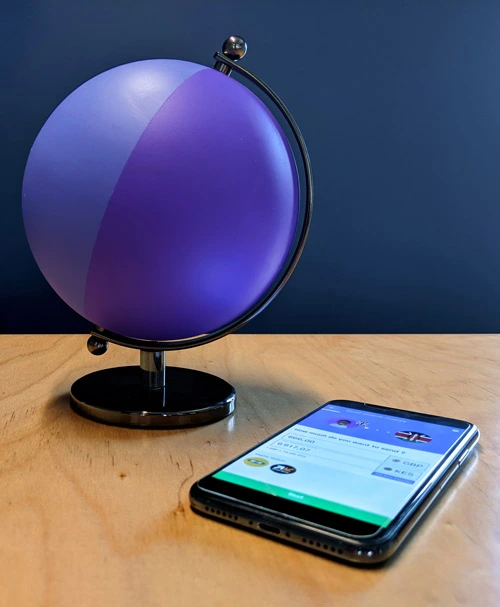Monisnap Uses Marketing Automation to Increase Customer Loyalty by 40% and Triple Money Transfer Transactions

About Monisnap
Monisnap was created as an alternative to the traditional European remittance market. After noticing that existing solutions for sending money abroad not only had high fees and dull products but also dropped the ball in terms of customer satisfaction, Monisnap was born to help foreigners in France and Europe send money to contacts in abroad.
The company has established a clear path to differentiate themselves from the competition, including a digital product, digital marketing strategies, and a referral program.
Results achieved with Brevo
+40%
increase in retention
3x
increase in money transactions
20+
automated scenarios
How they used Brevo for success
Monisnap is a money transfer solution that allows users to send money to more than 150 countries in less than 45 seconds from a smartphone. Since creating the company in 2017, the Monisnap team has worked on an effective marketing strategy to properly map the lifespan and evolution of each customer, from their first interaction with the website, through the discovery of their product, to their registration.
Jean-Baptiste Bouvier, co-founder and CMO explains how they developed a decision tree and a scoring system that allows them to automate and customize communications at every stage of the customer journey.
“At Monisnap we gather the data from customers’ behavior and then we transfer it to Brevo to create segments, this way a customer with a high score will receive differentiated communications and perks such as appointments, access to beta products, etc. from a customer who has used the app only a few times,” adds Jean-Baptiste.
Since its creation, Monisnap has stood out from the competition thanks to its fullly digital product approach and acquisition. For the team, this meant they needed a marketing solution that was practical, user-friendly, and affordable. Brevo was the right match.
With a contact base of over 380,000 users, the company uses Brevo for its main relationship marketing channels with newsletters, SMS, and retargeting.
In addition to these channels, marketing automation was one of the core reasons Monisnap selected Brevo: “The Marketing Automation tool allows us to customize communications which are sent with the objective of constantly re-engaging customers and reducing churn. Depending on the background and profile of the user, we will, for example, send them a message when a new country opens or offer them our services when the exchange rate of the country to which they are sending money is attractive,” comments Jean-Baptiste.
The Monisnap team adopted the Brevo platform back in the mid-2017. Since then, it’s allowed them to track and identify their most valuable customers across all customized communications. Jean-Baptiste emphasizes how important it was to have a tool that allowed them to transfer all the data they collect from their customer service, internal scoring, and website behaviour to their marketing solution.
Having this data in the Brevo platform is particularly useful for creating lists and segmentations, allowing them to narrow their audiences down and send more personalized messages to clients and prospects. “For example, during the onboarding we can send a new customer an email or SMS via Brevo to welcome them, send a push notification for a cross-sell or encourage them to subscribe. We also make sure a high value customer will have a differentiated communication from a customer who only visits once,” adds the CMO.
The team has also implemented over 20 automated scenarios for several uses. “The first is to maintain the customer’s life span by trying to re-engage him,” explains Jean-Baptiste. Furthermore, the company has found automation particularly useful for encouraging users to try new product features. For example, if a user normally transfers money in cash, they will send an automated message to inform the user of the release of a new feature that allows them to do it directly on the SIM card.
Jean-Baptiste explains that one of their main challenges lies in encouraging their recent clients to conduct repeat transactions. One of their automated scenarios has proven to be an effective marketing tactic and consists in sending a promotional email with a discount on their next transfer. If after a 48-hour delay the customer hasn’t opened it, they send an automated SMS.
Building loyalty with the Brevo automation tool has brought a lot of value to the company “If we acquire a very active customer via the web, we will trigger automation scenarios to encourage him to use the application. This way we actively work on reinforcing this user’s loyalty,” says the executive.
Three years after having implemented the Brevo solution and later upgrading to an Enterprise plan to accommodate their growth, the Monisnap team reports an increase in their customer retention of 40%. They credit their marketing strategy that combines an effective lead scoring system with automation, allowing them to send communications to the right customer, at the right time, and in 3 different languages.
“Scoring our customers is essential because it helps us to establish the different levels of communication and send the right message with Brevo. The scoring system has been defined internally in relation to the client’s lifecycle history, the number of transactions, beneficiaries, etc. Additionally, we take into account the user’s history and behavior on the site, and if we notice intention on a particular type of service, we add points to the internal scoring. Combining this with the Automation tool has brought us a lot of added value in terms of turnover,” explains Jean-Baptiste.
The CMO also emphasizes how since they started sending automated emails and SMS through Brevo, they have tripled the number of money transfer transactions on this channel. “When we started three years ago, we were looking for a solution that was practical, easy to use and at the same time affordable. Brevo was definitely the best solution. Today, this platform allows us to merge our customers’ behavior information with our CRM data so we are able to personalize all our communications,” concludes the CMO.

Read more customer stories

Island Federal Credit Union achieves 80% open rates

Florida Trend Achieves 50% Open Rate by Leveraging Dynamic Contact Segmentation
